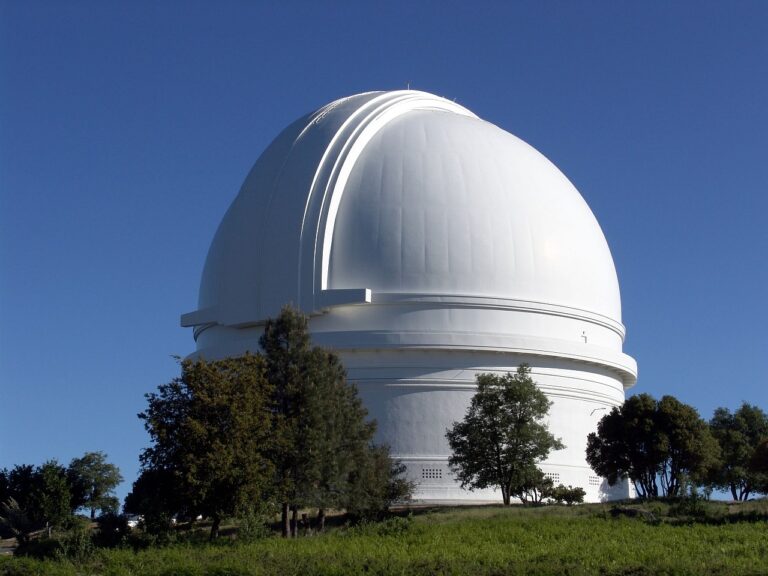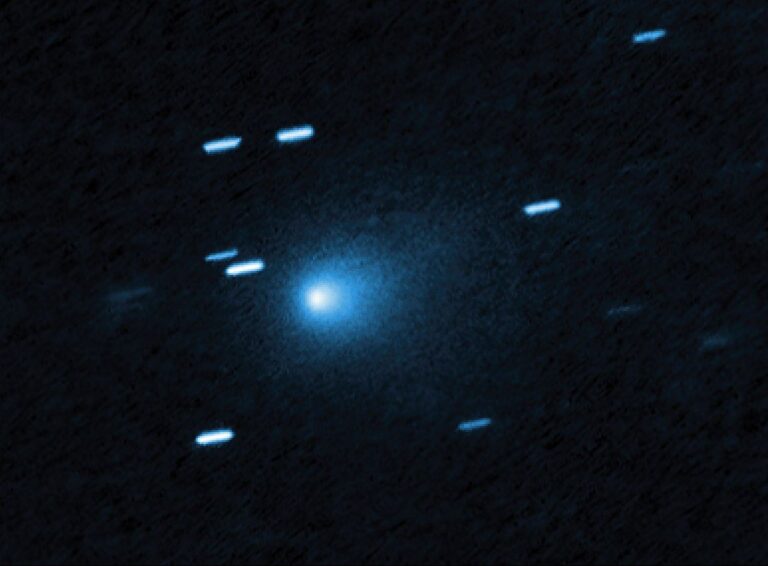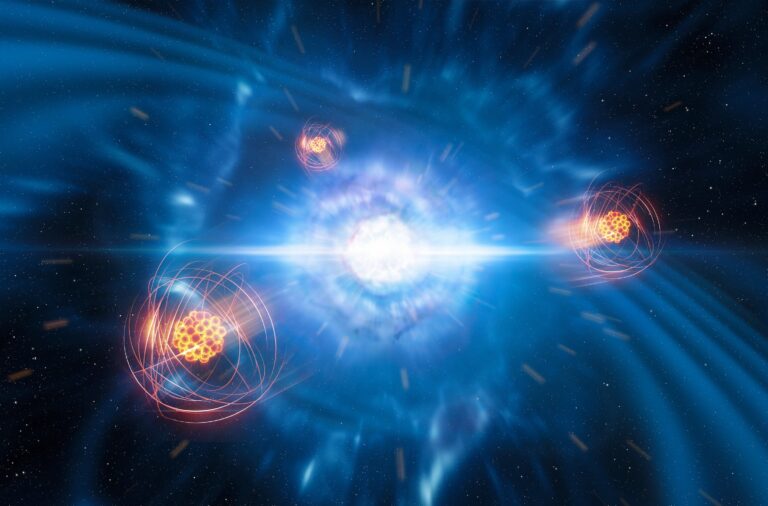Key Takeaways:
This illustration shows WASP-96b, an exoplanet about 980 light-years away from Earth. Researchers recently observed a large amount of sodium, which is typically veiled by clouds, radiating from the exoplanet’s spectrum. The discovery of this element indicates a clear, cloud-free atmosphere.
For quite some time, astronomers have suspected that hot gas giants outside of our solar system are rich in sodium — the seventh-most common element in the universe. However, this elusive element has mostly gone undetected in previous exoplanetary studies because its signatures are too weak to penetrate through cloudy atmospheres. But now, an international team of astronomers has squashed speculation and detected the first strong sodium fingerprint radiating from a “hot Saturn,” which suggests the planet has a clear, cloud-free atmosphere. The research was published May 7 in the journal Nature.
Using the European Southern Observatory (ESO)’s Very Large Telescope in Chile, the researchers uncovered distinct sodium signatures in the atmosphere of WASP-96b, an exoplanet located nearly 1,000 light-years from Earth. WASP-96b is about 20 percent larger than Jupiter and has roughly the same mass as Saturn, but since it’s much closer to its host star than Saturn is to the Sun, its sweltering temperature drops it into the “hot Saturn” category.
The research team, led by Dr. Nikolay Nikolov of the University of Exeter, used the Very Large Telescope to collect detailed spectra of many hot gas giants. By collecting a planet’s spectrum, researchers are able to break the light into its different wavelengths and determine the planet’s chemical composition. While studying the composition of WASP-96b, they found spectral lines indicating the presence of sodium. The signs of this element, which are typically cloaked by cloudy skies, appeared in the exoplanet’s spectrum as a tent-shaped silhouette, signifying the planet has a clear, cloudless atmosphere.
“We’ve been looking at more than twenty exoplanet transit spectra. WASP-96b is the only exoplanet that appears to be entirely cloud-free and shows such a clear sodium signature, making the planet a benchmark for characterization,” said Nikolov in a press release. “Until now, sodium was revealed either as a very narrow peak or found to be completely missing. This is because the characteristic ‘tent-shaped’ profile can only be produced deep in the atmosphere of the planet and for most planet
The abundance of sodium on WASP-96b undoubtedly helped to identify its clear atmosphere, but its presence could also hint at planetary conditions. The amount of sodium found is similar to amounts found in our own solar system, and on Earth, sodium regulates metabolism in humans and animals, is an abundant component of our oceans, and makes up about 2.6 percent of our crust. With comparable amounts of sodium to planets within our solar system, its conditions could be quite similar, as well.
The discovery goes beyond sodium, too. The cloud-free atmosphere will enable researchers to study elements that are typically disguised by thick clouds, like carbon dioxide, carbon monoxide, and water. They plan to use NASA’s Hubble Space Telescope and the upcoming James Webb Space Telescope to further study WASP-96b and its wide-open planetary features. And without pesky clouds to get in the way, who knows what else they can find.
Want to learn more about extrasolar planets? Download our FREE exoplanet e-book!











